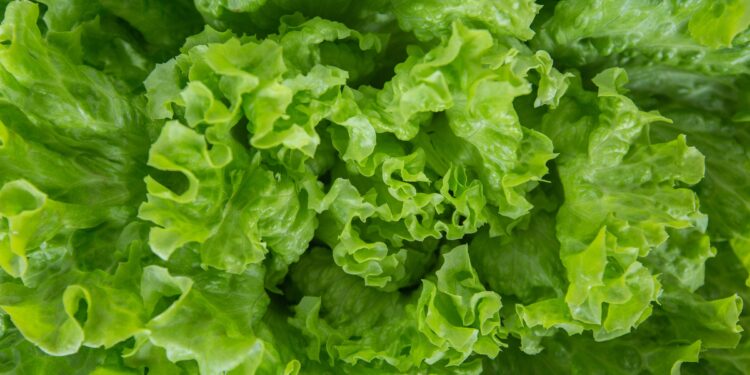Salmonella in the salad, Wash impossible – Naturopathy naturopathy specialist portal

How pathogens get into the salad
Food infections are widely used, despite all the hygiene measures continues to be extremely far. The pathogens get on food such as raw vegetables, poultry, beef and other foods in the human body. In the case of raw vegetables and salad, a thorough Washing is therefore regarded as a prerequisite for consumption. A recent study shows, however, that the pathogen penetration may also be in the salad and therefore not washable.

Bacteria such as Salmonella, Listeria and E. coli is a food in the human body and cause every year, millions of food-borne illness, according to a research team from the University of Delaware. The scientists have now discovered that Salmonella can penetrate through the tiny breathing pores in leaves of lettuce, and then within the Plant to be fixed. So it is quasi impossible to use this before eating to wash off.
Immune response of the lettuce plants bypassed
Advertisement
The research team led by Harsh Bais, and Kali Kniel of the University of Delaware has examined in his recent study of whether and how Salmonella can penetrate into a Plant. Your in the journal “Frontiers in Microbiology” published a study results show that the wild Salmonella which can handle strains immune system of a lettuce plant, and the tiny breathing pores of the Plant, the openings of the so-called gap (Stomata) in the plants arrive.
What is the gap opening?
The gap small Openings on the leaves, which open in a natural way and close, and by the circadian rhythm are regulated, are openings, the researchers describe. The Opening serve of the Plant to Cool down and Breathe. Openings are closed, the gap, when the plants are threats from drought, or plants bacterial pathogens continue to recognize, so the research team.
Advertisement
But can penetrate some of the pathogens with brute force in a closed Stomata, explained Bais. For this purpose, certain fungi are, for example, in the situation. Bacteria do not have the necessary enzymes. However, it is known that some of the “plant bacterial pathogens have found a way, this closed stomata to open again, and in the Interior of the Plant to penetrate,” says the expert.
Salmonella pass through the slit opening
In the new study, is now succeeded in demonstrating that some strains of the human pathogenic Salmonella have also found a way to open a closed a gap opening up again. It is an interesting discovery, “how Not to develop host bacteria to the plant to bypass the immune response,” says Bais.
Pathogens in the Plant
This also illustrates the dangers which may arise from contamination prior to harvest. And while the risks after the harvest, more of the hygiene practices in the processing and distribution, plug these pathogens with the crop in the Plant.
Disinfection and cleaning ineffective
Also, the treatment with water and a special disinfectant, as well as, where appropriate, ozone or ultra-violet treatment, with the surface bacteria are relatively reliable killed can not help against human pathogens which have already penetrated into the sheet, stress the researchers.
Risks due to irrigation?
Furthermore, the research team had analysed in earlier studies, among other things, in collaboration with researchers from the US Department of agriculture and the University of Maryland possible contamination of the plants by the irrigation methods. So, for example, won is often a part of the water back after it has already been used for Washing harvested plants. This could pose a Problem. As well as the irrigation from water courses and ponds, report the researchers.
“It has been shown that water (…) represents a potential risk of contamination,” says Kali Kniel. This finding is important, because it is now a question of how it can be achieved that the irrigation is always carried out with micro-biologically safe water. Further risks for the Penetration of human pathogens in the plant are, according to the researchers, for example, plants that have been specifically bred to increase the yield, which is often at the expense of their own defense systems. And there is also the possibility of contamination when plants are too close to a cattle pasture was.
Risks even before the harvest
Given the new findings, it is clear that not only the superficial contamination of the plants with the possible triggers of a food infection can be a risk, but also before the harvest already in, there are risks. Here, the resulting strains of the Plant can, if appropriate, in the follow-up even with a thorough cleaning does not eliminate it. It is worrying that, in the current study, the lettuce plants exhibited in the case of contamination with Salmonella have no symptoms of a disease, and no externally visible changes. (fp)